Spinach, green beans, scallions and more! Here are the very best veggies to grow in your indoor veggie garden.
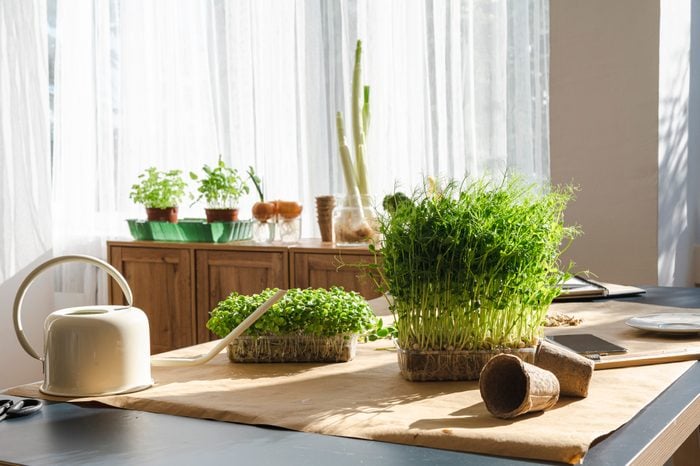 WESTEND61/GETTY IMAGES
WESTEND61/GETTY IMAGES
A hiding winter season does not imply you need to quit homegrown veggies. Make the most of a warm window to produce an indoor veggie garden that can supply whatever you require for a salad. And with grocery store inflation, the cost savings from growing your own veggies will deserve the additional effort.
The majority of the time you can utilize nearly any container as long as it has great drain. For housebound plants, search for potting mix created particularly for indoor growing. When it comes to hydration, bear in mind the distinctions in between watering plants outdoors and in. Include your preferred seeds and away you grow!
1
/
12
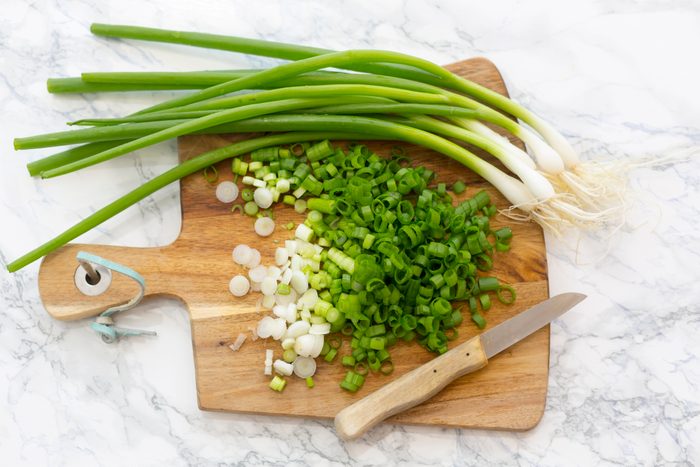
Westend61/Getty Images
Scallions
Scallions and green onions are essentially interchangeable. They both originate from the very same onion household, making them both very basic to grow. The next time you purchase a lot at the supermarket, leave an inch or more of the white scallion connected to the roots. Location completions in a straight sided container or glass and immerse simply the roots in water. The scallion greens ought to begin growing once again even simply resting on a counter.
When the greens are numerous inches high, move the scallions to a container filled with wet potting mix. The greens will continue to grow. To collect, cut to the root line. That method, the scallions can grow consistently for stir french fries and your next batch of scallion and cheddar biscuits
2
/
12
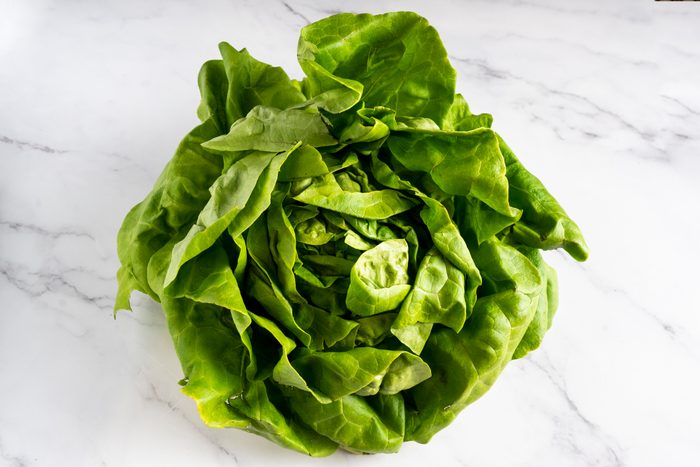
Jordi Calvera Solé/ Getty Images
Lettuce
Lettuce is a light fan, so choose your sunniest south dealing with window. Indoor success is most likely with loose-leaf or infant leaf lettuces that do not require to establish considerable heads. Any well-draining container can support lettuce growing, simply fill it with moistened indoor potting mix. Sprinkle seeds like you’re seasoning a soup. They’re small, however attempt to spread out apart by an inch. (Don’t fret about overseeding– seedlings can be thinned and contributed to salads.) Spritz the seeds and leading layer of soil with water.
Location in an area that gets at least 5 hours of sun, however watch out for hot summertime light producing excessive direct heat. A lot of lettuces like brilliant however cool conditions. If leaves are extending, supplement with grow lights. Spray soil with water when it starts to dry. Clip outside leaves initially when they reach numerous inches and secure your harvest with the ideal kind of lettuce keeper
3
/
12
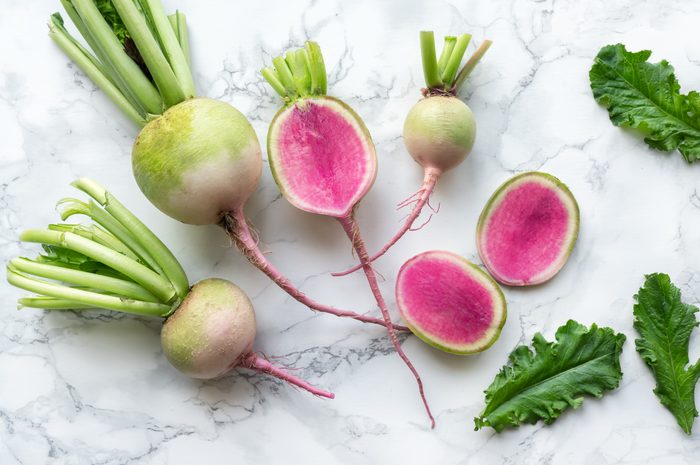
Eugene03/Getty Images
Radishes
We enjoy a completely edible plant! From leading to bottom, radishes benefit indoor growers. You can consume the greens raw or sauteed, or include the bulb to salads and supper meals. Radishes praise the sun, so try to find a window that provides 6 to 8 hours. In lieu of nature, attempt a grow light for a minimum of 12 hours a day.
Usage a minimum of a 6-inch deep container that is likewise broad to provide radishes area to establish. Fill with wet potting mix, spread numerous pinches of the small seeds throughout a container. Cover with a shallow layer of wet soil. While they require water, swampy conditions might lead to illness so make certain there’s a lot of drain. When seeds have actually grown, thin the seedlings to about an inch apart. Depending upon range and conditions, radishes can be all set to enjoy in a month or 2. Carefully get rid of dirt around the root to inspect its size.
As soon as your crop is all set, try out these enjoyable radish dishesor keep it as easy as possible and chomp on radishes with butter and sea salt (aka the world’s most convenient appetiser).
4
/
12
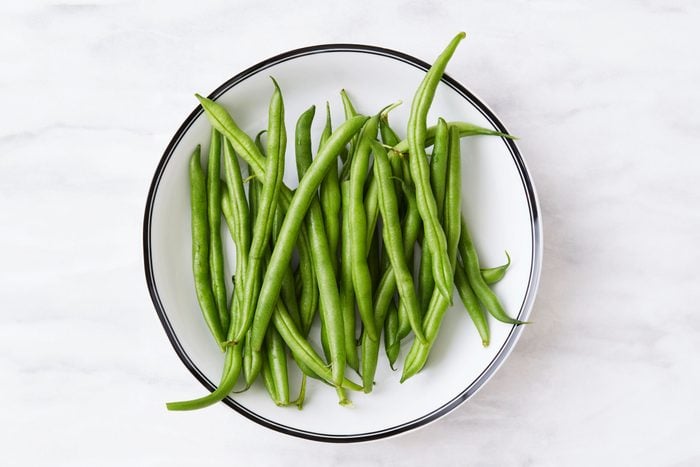
Winslow Productions/getty images
Green Beans
Like other garden favorites, green beans require a strong 6 hours of direct sunshine or grow light comparable. They can be found in 2 ranges: Avoid the obstacle of incredibly leggy pole beans in favor of stockier, self-supporting bush beans. Look for seeds that are self-pollinating.
In order to grow adequate green beans to make a harvest rewarding, try to find a bigger pot with drain. Area beans a minimum of 2 inches apart. Plant 2 seeds at a time, pressing them in moist potting mix past your very first knuckle (an inch). Cover the hole and keep the soil uniformly wet. Within a number of weeks, sprouts need to form.
If 2 plants emerge, you can pull the weaker one out. Turn the pot weekly for even sun direct exposure. After the plant flowers and fruits, ensure to collect all the beans. Leaving them connected can reduce the plant’s life because it will believe it produced the seeds needed for recreation.
There are lots of tasty methods to consume green beans, however if you have a bumper crop, these marinaded green beans are the method to go. They’re wonderful by themselves and even much better as a Bloody Mary garnish!
5
/
12
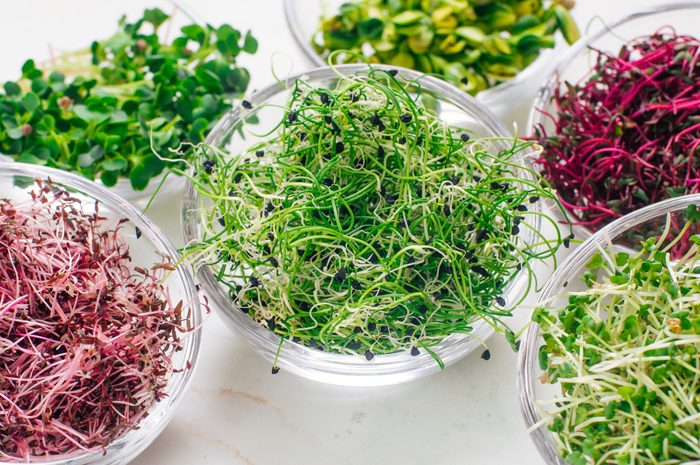
lithiumcloud/Getty Images
Sprouts
Sprouts are amongst the fastest growing indoor crops. They include terrific texture to salads and sandwiches. The most crucial growing suggestions are to be particularly conscious of tidiness and to utilize just seeds, grains and beans planned for growing. Others might position health dangers– especially if consumed raw.
From alfalfa to lentils, the standards for growing stay constant. Sprouts will do much better far from direct window light. A brilliant counter top will work. Utilize a particular growing container or a broader container that enables air circulation. Tidy devices and your hands with hot soapy water and rinse. Soak seeds in water approximately 12 hours in a dark area to start germination. Position them in your growing container. Wash and drain pipes completely with cool, fresh water 2 to 3 times daily.
Depending upon varietals, sprouts will emerge in between 3 and 6 days. Start a batch every couple of weeks for a consistent supply.
6
/
12
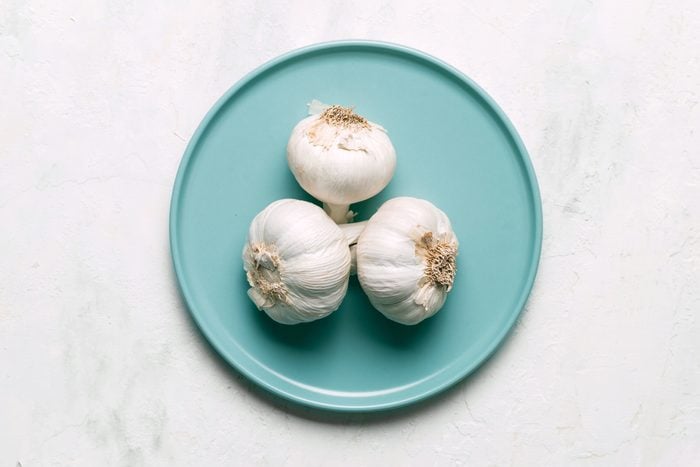
Israel Sebastian/getty images
Garlic
For anybody who has actually ever planted garlic in the garden in September for a spring/summer harvest, it may amaze you to discover it can definitely produce deliciousness in your indoor veggie garden. Rather of growing bulbs, concentrate on greens! Like quick growing indoor herbseach garlic clove can grow greens.
To begin, break a head of garlic into different pieces. It can be tough neck or soft neck. Fill a 6-inch container with damp potting mix and guarantee the drain hole stays clear. Plant a number of cloves a minimum of midway down as close together as you would like. (Note: the pointy end ought to deal with up, the flat side deals with down for roots to grow.) Location the container in a brilliant area and green shoots ought to emerge in a week or 2. They’re prepared to clip when numerous inches high. The cutting motivates a number of rounds of development before the bulb is tired.
Growing garlic bulbs inside is possible, however needs a lot more preparation and persistence. Cooling the bulbs for a minimum of a couple of weeks to reproduce winter season is needed. It might still take up to 9 months to harvest.
7
/
12
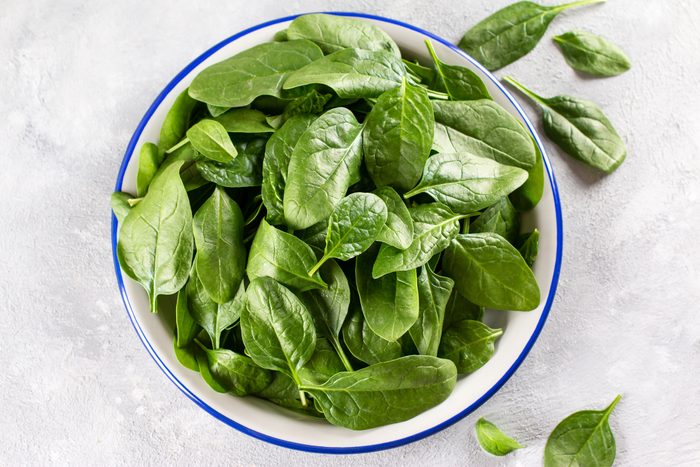
Qwart/Getty Images
Spinach
Spinach is appropriate to growing inside your home given that the less extensive light fits its cooler environment character. Attempt a broader and much deeper container with a lot of drain. A 6-inch depth ought to suffice. Fill with moistened indoor growing medium, and plant seeds about 1/2-inch deep and a minimum of 3 inches apart to provide area for fully grown plants. Location in a sunshine-filled window.
They will sprout in between 50 ° and 80 ° F, however if absolutely nothing takes place after a week or two, a heat mat can start the seeds. Keep the soil uniformly wet however not filled, and prevent watering the leaves. Infant spinach can be gathered anytime, being conscious to take the external leaves. The plants with 6 leaves are fully grown.
In addition to being extremely healthy, spinach is flexible. Sauteed spinach uses a prepared option to crisp spinach saladsYou can likewise wilt it into soups and stews or mix it into spinach pesto
8
/
12
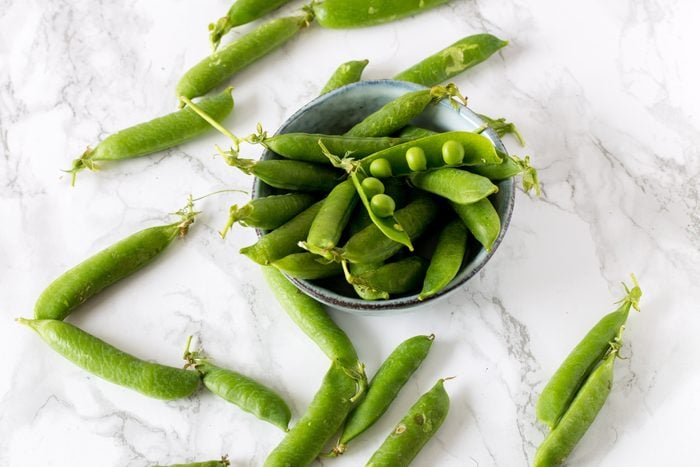
izhairguns/Getty Images
Peas
Ever think about growing peas inside? These tasty veggies are amongst the healthiest veggies you can consumeObviously, unless you have lots of area, it might be challenging to gather a crop big enough for a whole side of creamed peas or spring pea souphowever they are enjoyable and the pea shoots are likewise edible.
A lot of peas need to flower and fruit by themselves, however constantly examine a seed package. You can plant a number of in a bigger pot, or a couple of in something smaller sized. Press pea seeds about a half inch into the wet potting mix. Cover the hole and location in a location with a minimum of 8 hours of direct sun.
Just like other indoor growing veggies, grow lights can supplement what nature isn’t offering. A trellis for growing assists with air circulation, however shoots can hang. Harvest greens as needed or wait on the pods to establish.
9
/
12
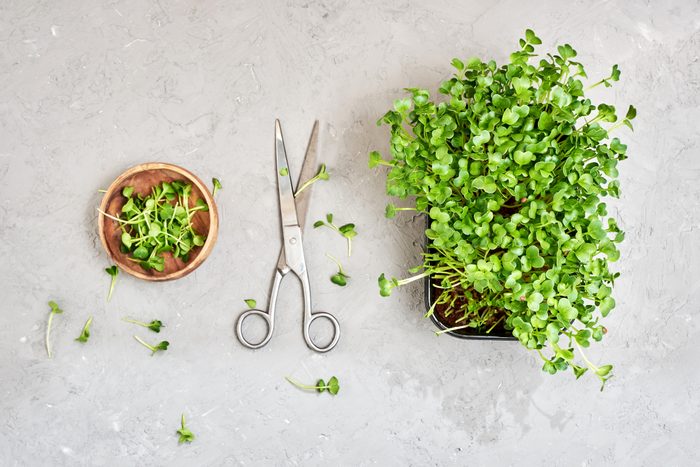
Redjina Ph/Getty Images
Microgreens
Microgreens are the little however effective starts to what would be bigger plants like broccoli and kale if you let them grow. You do not. And with a little attention, they can produce a lot of fruit and vegetables for your salads.
Shallow trays and natural potting mix are the very best method to begin your microgreen mini farm. Make sure all of the devices is decontaminated. They grow in a moist environment and germs is constantly a threat. Technically any seeds can be grown in micro style, attempt to discover seeds or blends that are offered as microgreens. This assists to guarantee success and to prevent consuming something not suggested to be an edible leaf.
Begin by soaking seeds overnight. Scatter seeds on moist potting mix and cover with another thin layer. Some microgreen meals have a cover to aid with germination. If a warm window ledge leads to sluggish growing or spindly greens, location under a grow light. Utilize a sprayer to water, and inspect the soil daily. Some greens may regrow after cutting.
10
/
12
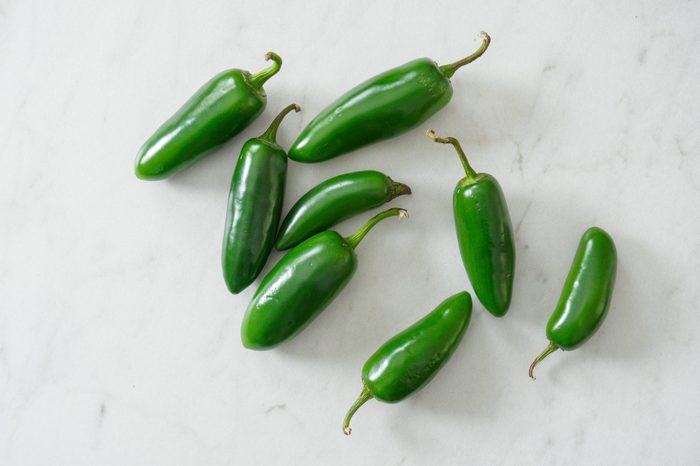
Liz W Grogan/Getty Images
Hot Peppers
If you can’t get enough of the heat of jalapeno dishesattempt growing your own in your home! Numerous sunlight and warm temperature levels are essential. In this case, it might be simpler to begin with plants from a nursery. Due to the fact that they prosper in gardens that get sun all day, attempt to reproduce that with a minimum of 6 hours of direct sun and brilliant light for the remainder of the day.
If the peppers look listless in your window after a long time, include a heat mat or a grow light. Search for smaller sized ranges of hot peppers that have a higher opportunity of being successful. As they grow, they will require to be transplanted into bigger pots– 10 to 12 inches or beyond. Keep watering routinely however inadequate that you begin observing soaked roots. It might take numerous months to see fully grown fruit.
11
/
12
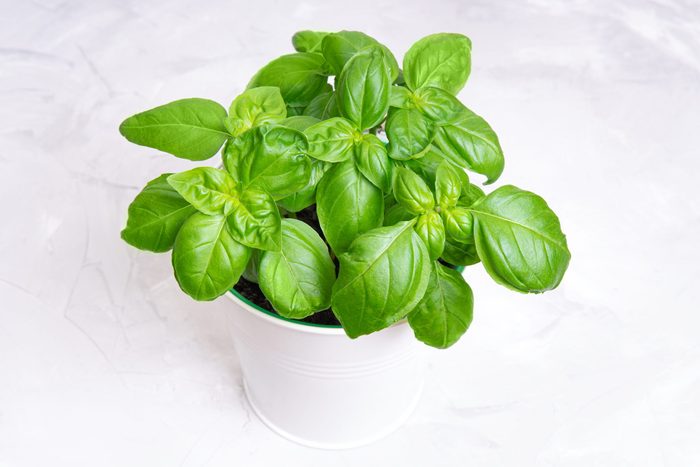
Ekaterina Chizhevskaya/Getty Images
Basil
If you have a south- or east-facing window, you can grow basil. No window? No concerns. A grow light can be adequate. Search for basil ranges that match the dishes you prepare to prepare– sweet basil or sweet Genovese seeds are typically offered.
Fill the container of option with moist potting mix. Sprinkle seeds equally and cover with a thin layer of more moist soil. Up until those seeds grow and root, think about spraying instead of putting water and interfering with small roots. Little basil cuttings can top soups and salads. Or, to motivate durability, enable the basil to grow till a number of sets of leaves are developed. Cut simply above leaf blemishes to motivate branching and more production.
Pro suggestion: Hydroponic and soil-based plants, like basil, are typically offered in grocery produce areas. Location hydroponic plants in a container with water covering the roots. They will continue to grow. Potted plants can be kept as is till you see the soil isn’t soaking up adequate water. Find out when and how to repot plants to keep them healthy. Water when the leading inch or more is dry.
12
/
12
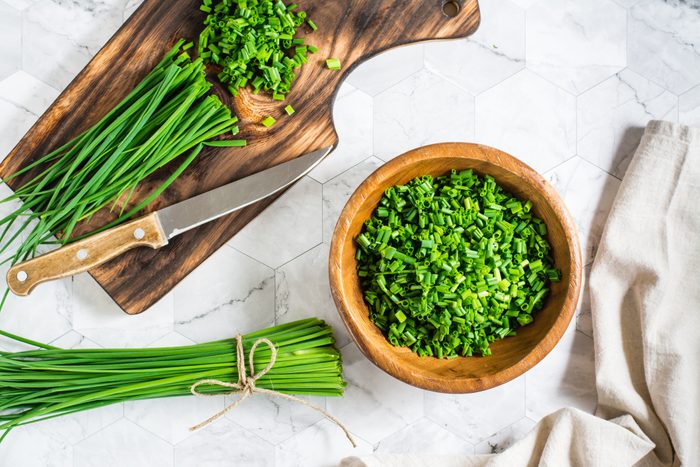
Elena Rui/Getty Images
Chives
If you find out how to freeze herbsyou can protect all the tastes of summer season. You can likewise bring seasonal favorites like chives to grow inside to delight in fresh any time of the year. Transplanting from a grower pot is a terrific method to start. Simply ensure the updated container has to do with one size larger (or an inch bigger in area). Fill it with wet potting mix, and make an anxiety to match the size of the root ball. After putting it in the container, complete with soil to a half inch listed below the lip.
To grow chives from seed, fill a 6-inch container with pre-moistened potting mix. Make sure water can drain pipes easily. Sprinkle seeds throughout the top and cover with a thin layer of more wet soil. Find in a location with 6 to 8 hours of intense light. Keep the soil wet however not drowning. Chives must begin growing within 2 weeks.
Initially Published: November 20, 2023
Discover more from CaveNews Times
Subscribe to get the latest posts sent to your email.

























![Exploring the Serene Beauty of Nature: A Reflection on [YouTube video title]](https://cavemangardens.art/storage/2024/04/114803-exploring-the-serene-beauty-of-nature-a-reflection-on-youtube-video-title-360x180.jpg)























